From Dreams To Action
A conversatorio with Mayor Rey León of Huron
September 22, 2023
The Center for the Critical Study of Health of Latinx Communities (Critical Study HLC) had the privilege of hosting Mayor Rey León, Dr. Sarah Ramirez, and Dr. Sebastian Rubiano for a conversatorio on September 26th at the Latinx Research Center. Critical Study HLC’s co-directors, Dra. Clara Mantini-Briggs, Dr. Charles L. Briggs, and postdoctoral researcher, Dr. Carolina Talavera, led the panelists in a meaningful conversation surrounding the health of the Latinx community and each panelist's work. A crucial aspect of this event was to host high school students from Hurón to come to hear and be inspired by the work being done by our panelists.
Dr. Sarah Ramirez, a public health researcher, recounted her early years as the child of farm workers–seeing first-hard the health disparities this community faced in the San Joaquin Valley. Dr. Ramirez reflected on the stereotypes and stigmas Mexican and Chicanx communities encounter in the health care setting, including herself–from doctors who expected her to have diabetes because her dad did or was overweight because “Mexicans like their kids overweight”. These stereotypes are heard and internalized by the Latinx community more broadly. For this reason Dr. Ramirez encouraged the students of Huron in attendance to try to unlearn these stereotypes by shifting away from narratives that focus on blaming the individual towards frameworks that account for how stigmas and inequalities are produced at the structural and institutional level. The students of Huron were encouraged to remain observant of the world around them and to formulate ways to make it better, not just for their current community but for their future selves.
Dr. Clara Mantini-Briggs saw the quality of life for people of Moron, in the state of Carabobo, an under-resourced town in Venezuela, then decided she wanted to become a doctor. Dr. Mantini-Briggs discussed her decision to become a doctor with her community, and faced discouragement she expressed her dream of acquiring a university education. Individuals would question her ability to accomplish this, whether it was the cost of becoming a doctor, or the financial cost, or her ability to achieve such a degree.
As a doctor in Venezuela, Dr. Mantini Briggs witnessed the effects of cultural and racial stigmas within the healthcare system. When working in the jungle in Venezuela, Dr. Mantini-Briggs asked about diarrhea afflicting the local indigenous populations–their response was that this was a ‘normal’ diarrhea that killed this population at the beginning of the rainy season. Those deaths, the result of diarrhea, were preventable by providing indigenous communities with potable drinking water, improved sewer systems, and by creating programs that address and eliminate stereotypes by non-indigenous communities towards indigenous people.
Dr. Mantini Briggs, in a provocative statement, told the students of Huron and UC Berkeley students in attendance, to break through the limits imposed onto them by stereotypes. More specifically, she challenged the students of Hurón and the UC Berkeley students in attendance to overcome the internalization of stereotypes that place limits on them as individuals, and as a collective.
Overall, despite the diversity in contexts from which they were speaking from, our panelists shared several points. They encouraged the students to reject the internalization of stigmas and stereotypes, challenge and flip the narratives that haunt them and communities, and instead to hold the systems and institutions accountable for the inequalities plaguing communities around the world. But as the panelists emphasized, to do this, the youth need to get involved in their communities.
“Se tiene que tener las ganas”
— Mayor Rey León
Rey León, Mayor of Hurón, discussed the projects he has developed to improve the well-being of Huron residents. One project Mayor León of Hurón discussed was the Green Raiteros, a program designed to provide transportation for community members to attend medical appointments. Other projects include building a center for social and cultural growth, development of parks and vast publicly-accessible green spaces in the city, and much more. Mayor Leon’s ambitious public projects have included progressive green infrastructures, including the routing of grey water from residential areas to irrigate green public spaces.
Drawing connections across geographic contexts, Dr. Sebastia Rubiano described some of the repercussions of the mercury crisis in Colombia, South America. In particular, the effects it had on mine workers. His doctoral research explored why mercury became a topic of interest, leading the United Nations to signa treaty that aimed to regulate and address mercury pollution worldwide. Dr. Rubiano’s research focused on the implications of this policy on people who still relied on mercuring mining to earn a living.
As Dr. Rubiano reflected, Segovia's mercury crisis parallels Huron's pollution crisis and inspired questions about accountability and the power of reclaiming stigmatizing narratives. Through blood and urine samples of individuals from Segovia in the Colombian Andes, it was found that Mercury levels were one thousand times higher than the WHO limit, bringing attention to two centuries of toxic exposures and pollution. By taking the label of ‘most polluted’, activists and miners in Segovia have been using this as grounds from which to take legal action against the ther Colombian government for failing to address the exposure and pollution of mercury mining. Thus, reclaiming the label of being the most polluted city to enact legislative change and accountability from the Colombian government. How, he asked, can we transform these stigmatizing narratives to challenge systemic inequalities?
“Nunca dejen que la gente les diga que no pueden. Si no pueden por la puerta, por favor entren por la ventana. Necesitamos a ustedes como una generación de [profesionales] relevo.”
— Dr. Mantini-Briggs
Watch the event below!
Youth Outreach
As part of our “Dreams to Action” event, we invited middle and high school students from Huron to tour campus as well as to participate in our event. The students took a tour of the UC Berkeley campus led by current Latinx undergraduate students and Cal alumni, Mayor Rey León of Hurón. During the tour, Mayor León, who was a Communidad for Health Equity (CHE) member and activist during his time at UC Berkeley, shared stories with the students about this experiences organizing at Berkeley and beyond. Mayor Leon often speaks about how the education he received at UC Berkeley has significantly impacted the work he does now in his community. To conclude the tour, Huron students visited the Cal Student Store on Bancroft and bonded with one another and current students over boba drinks afterward.
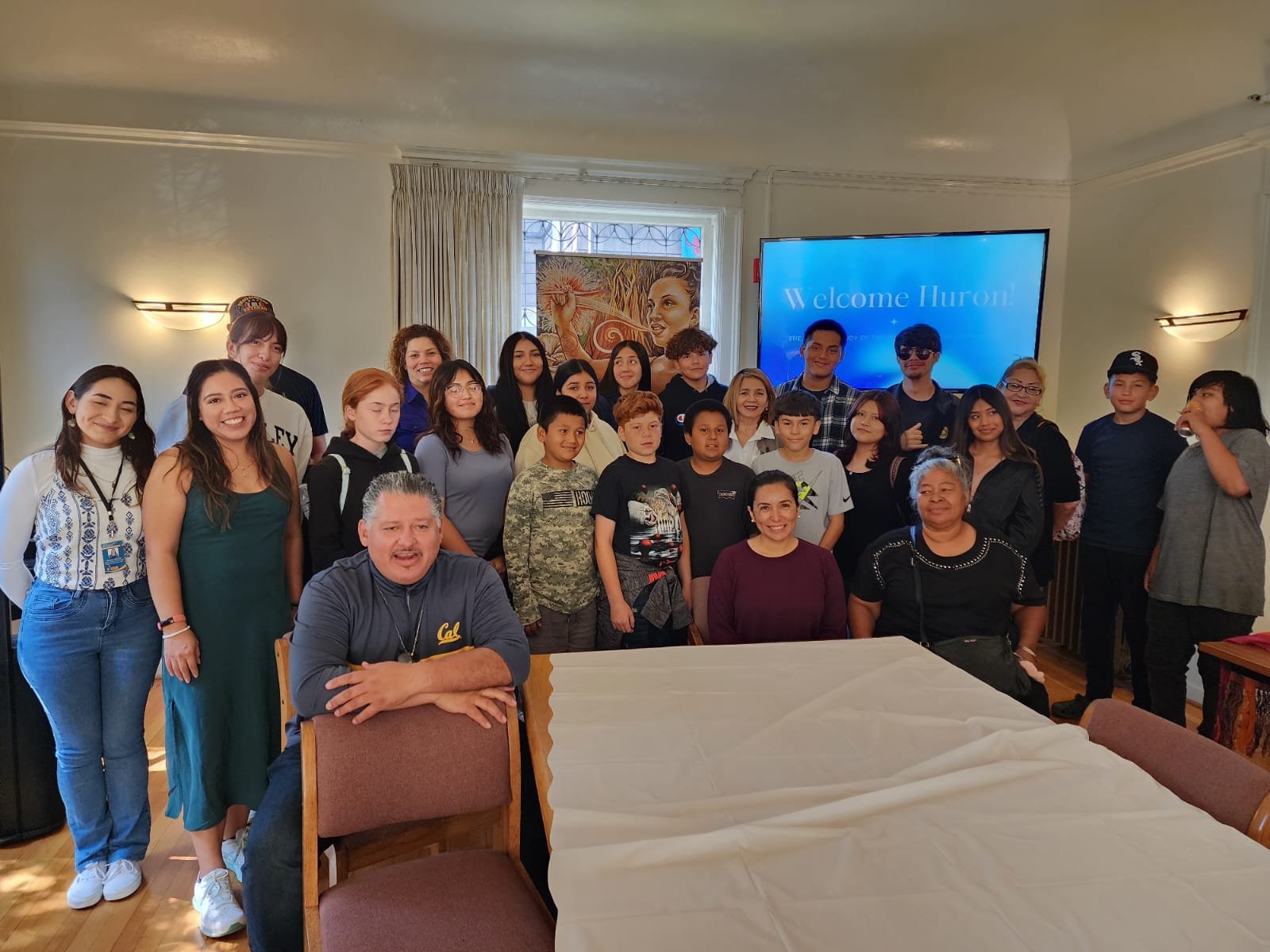
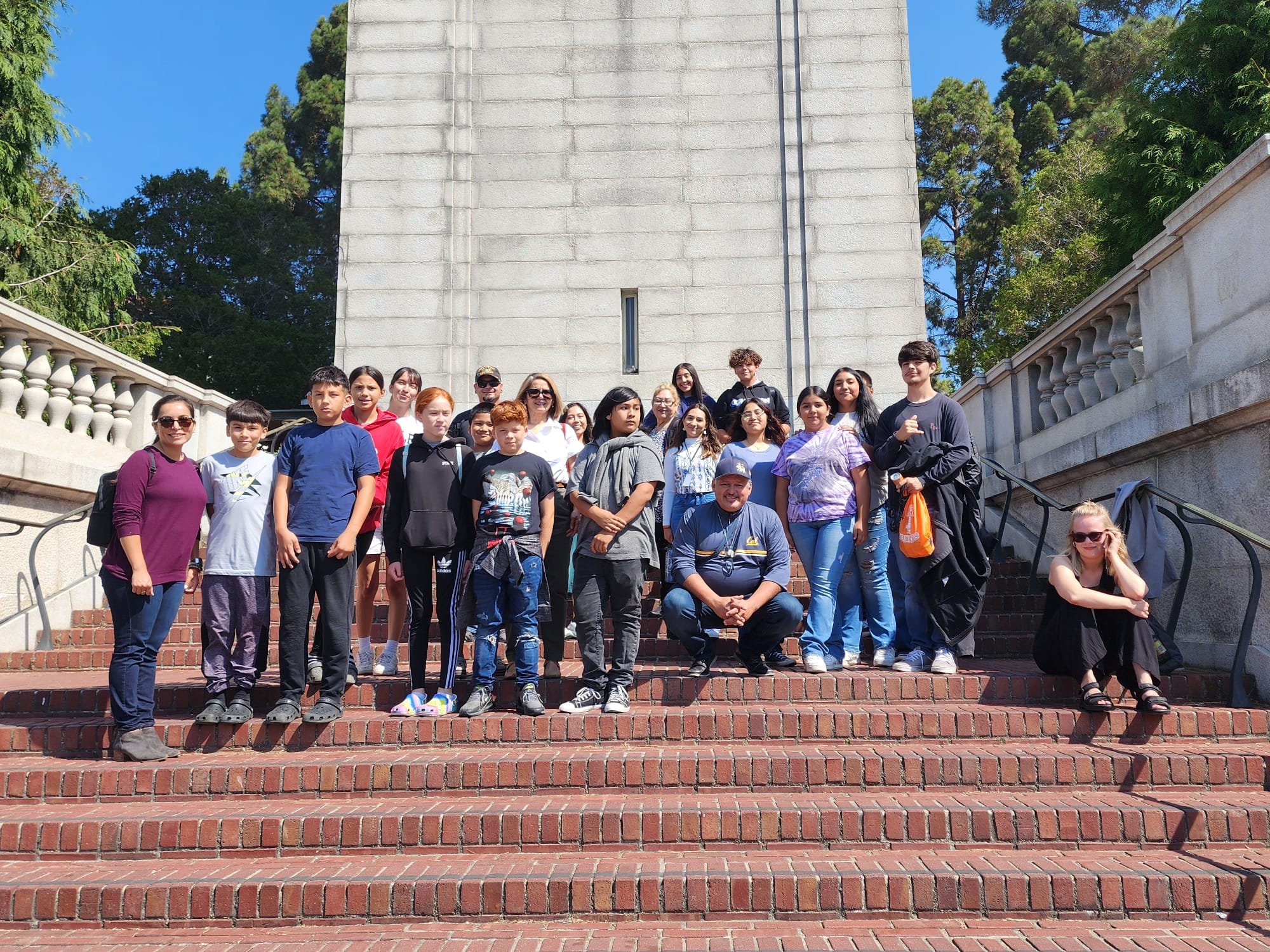
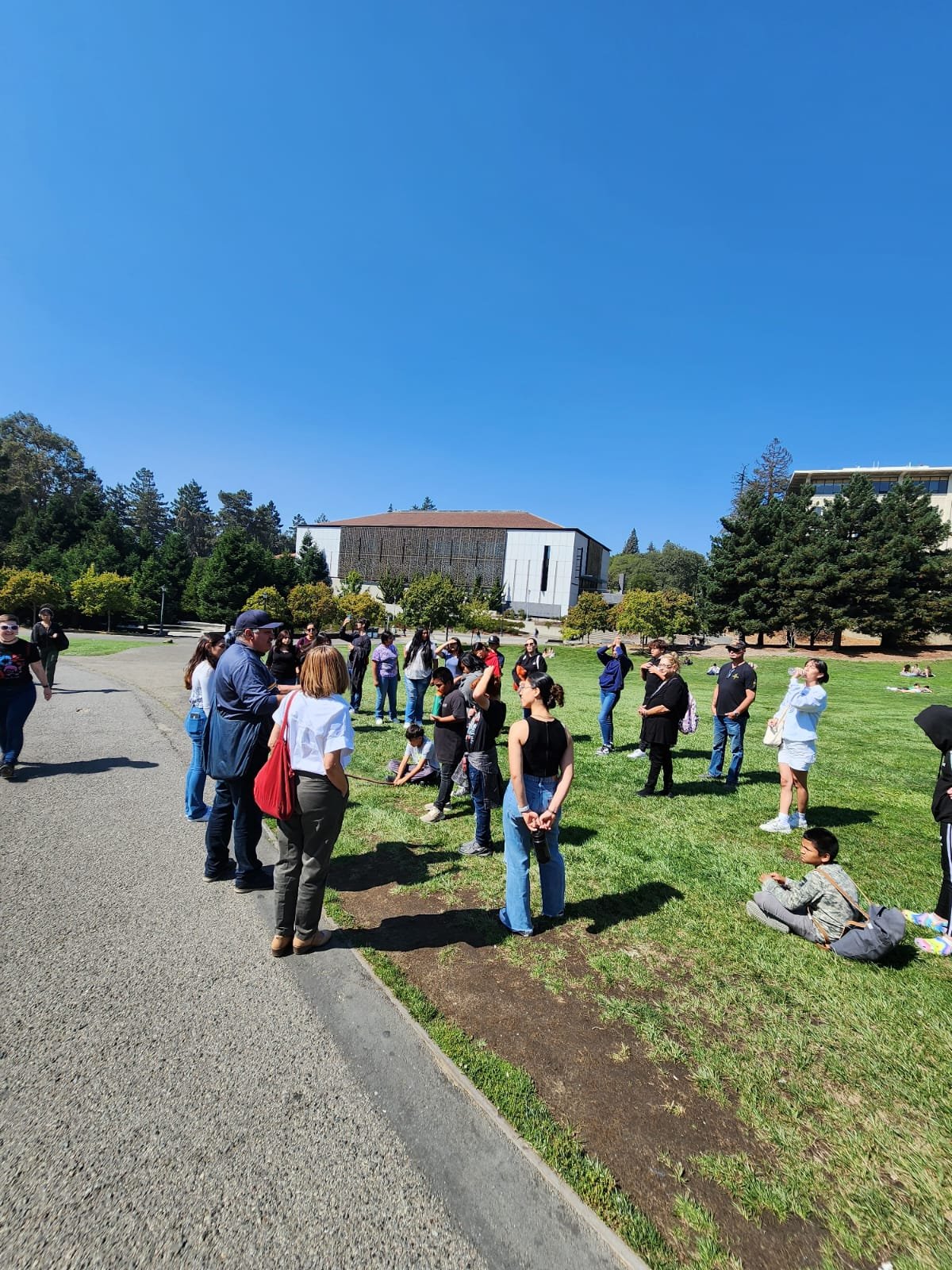
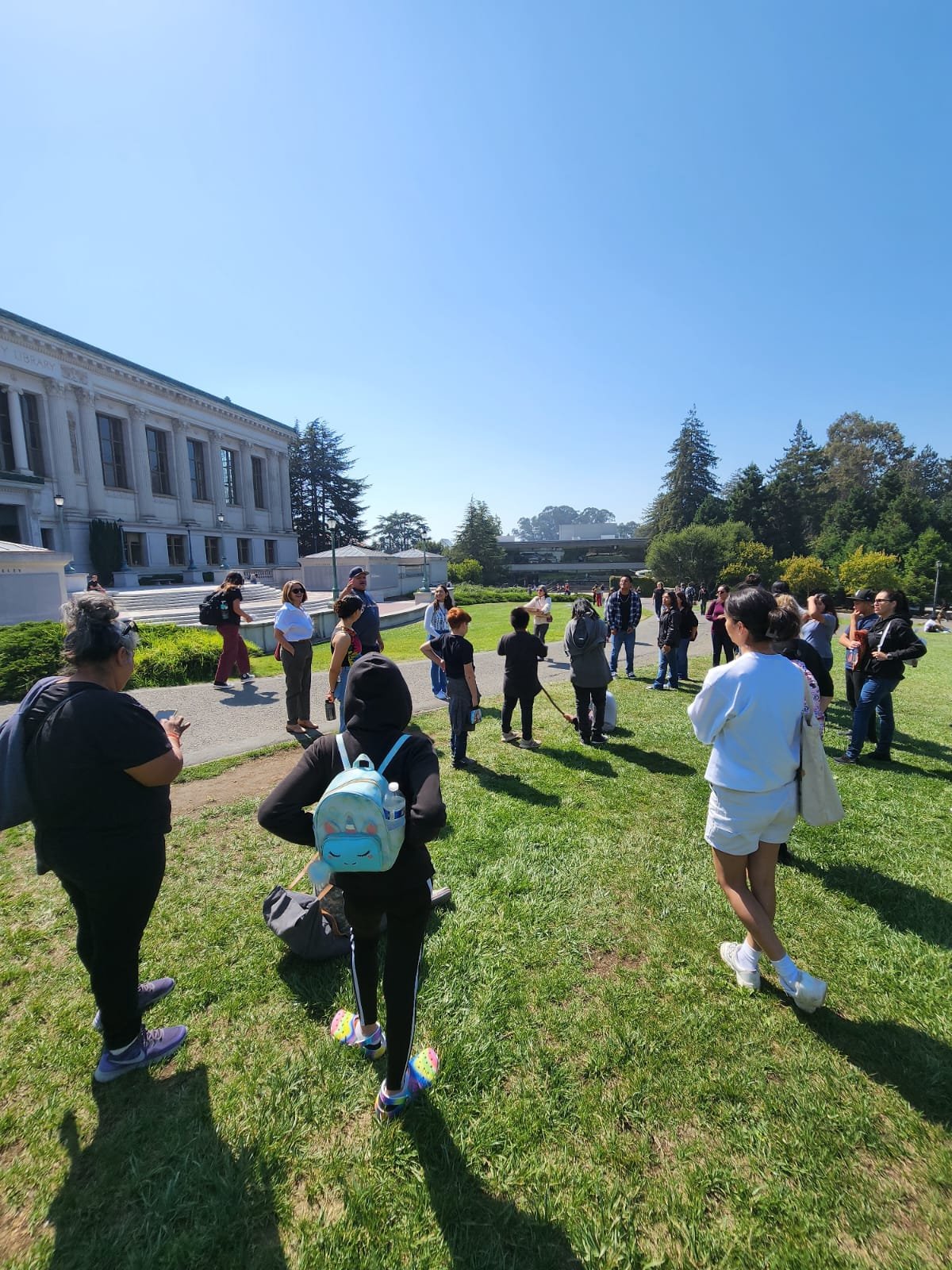
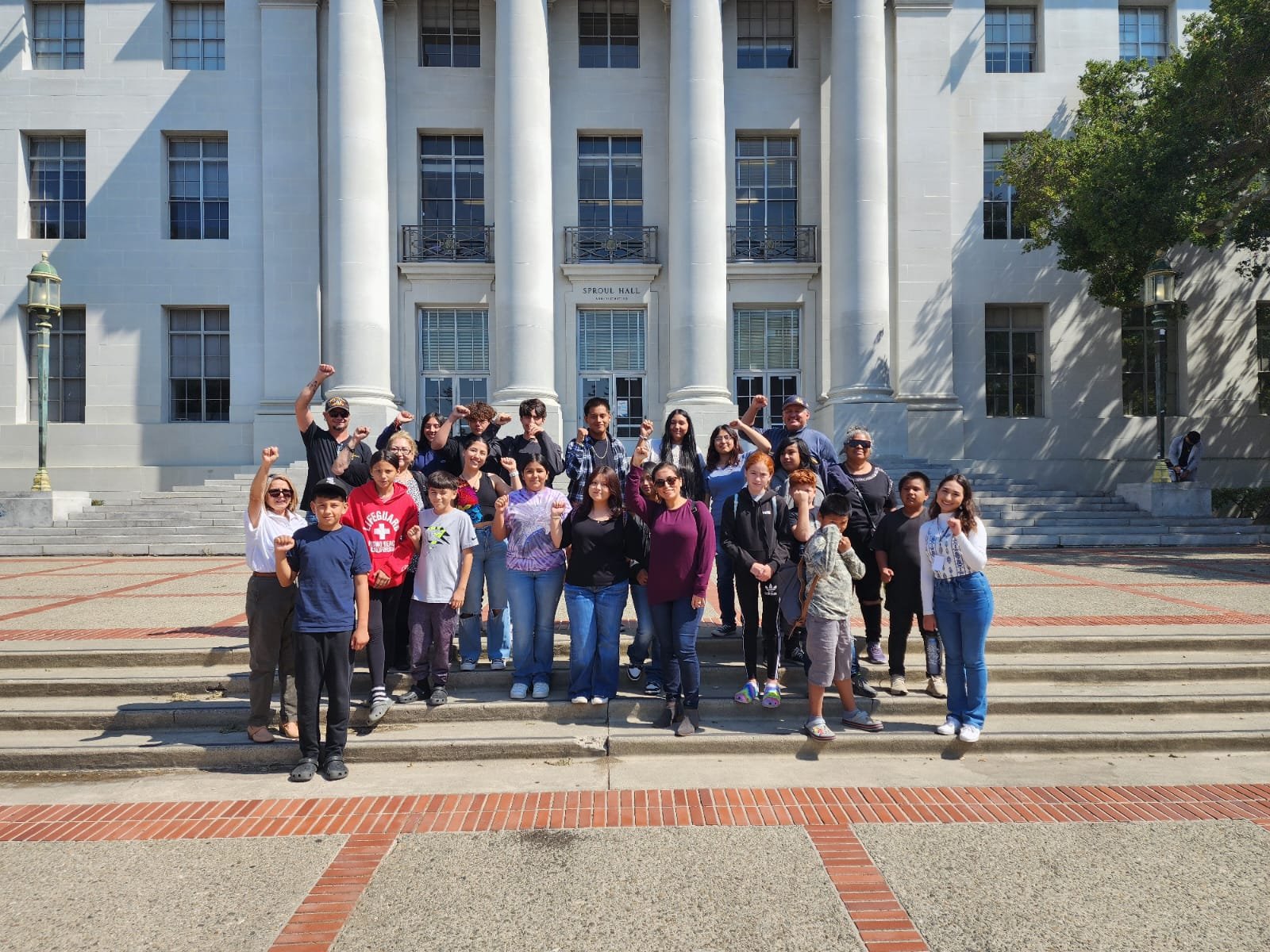
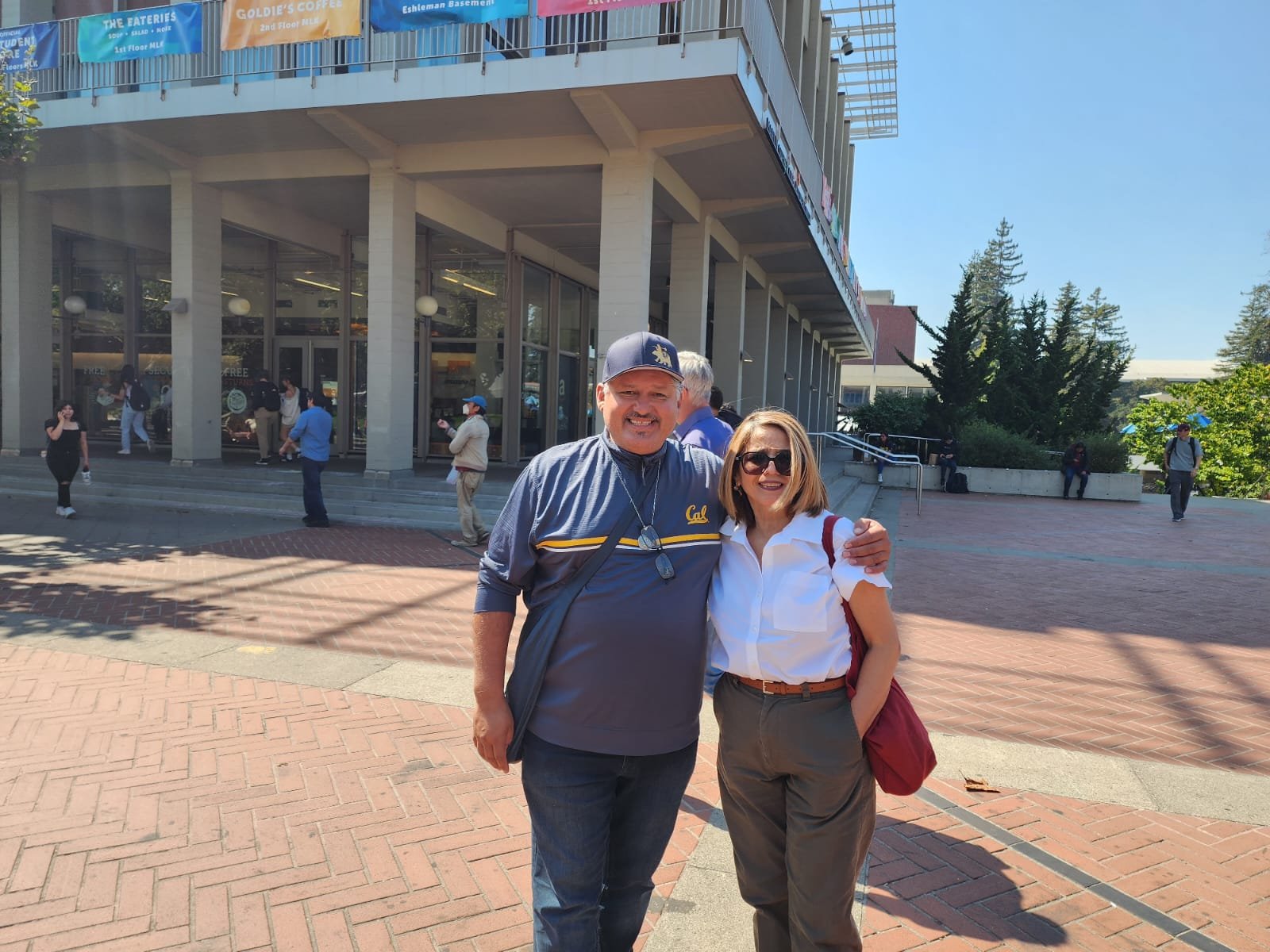
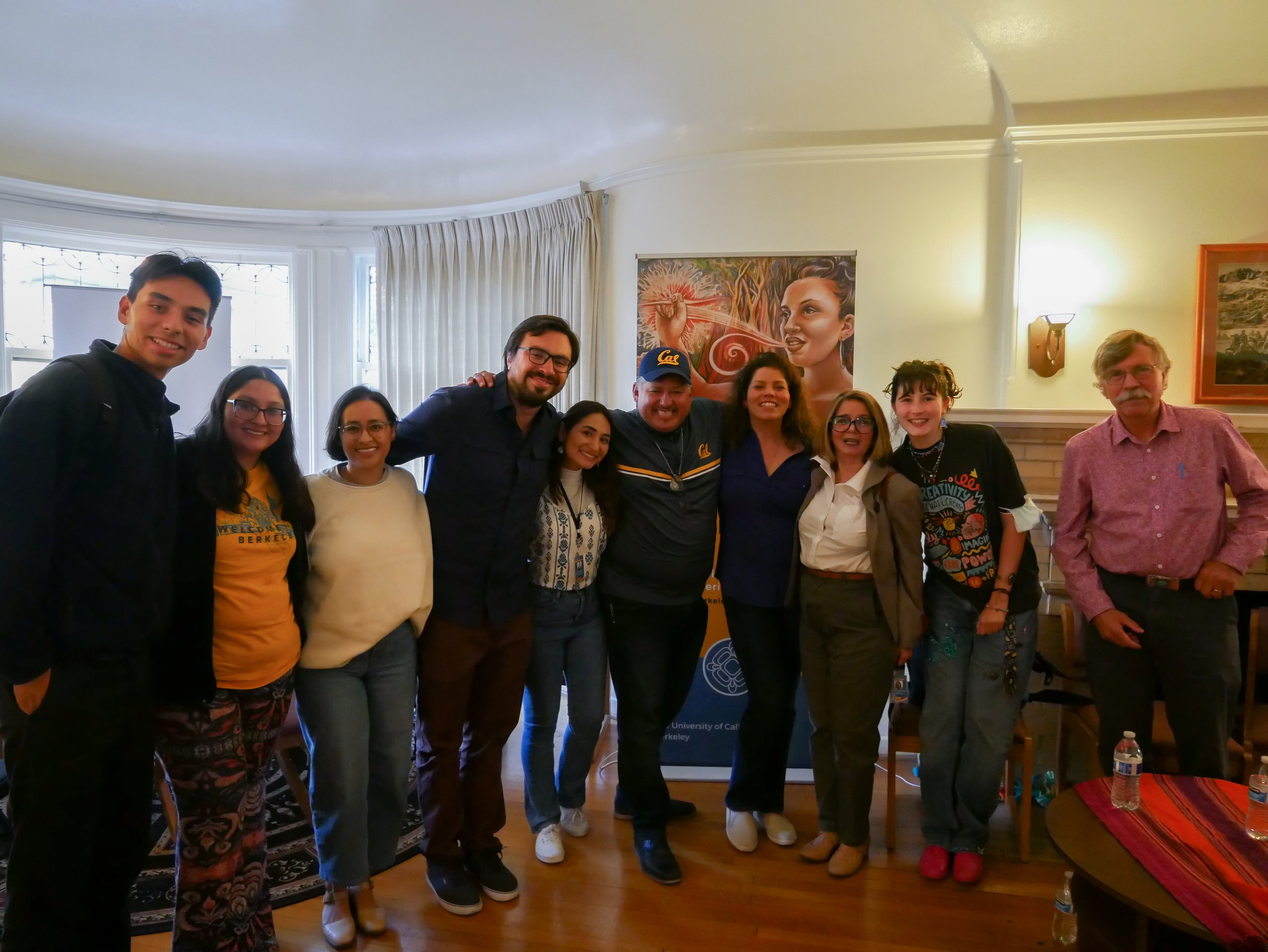
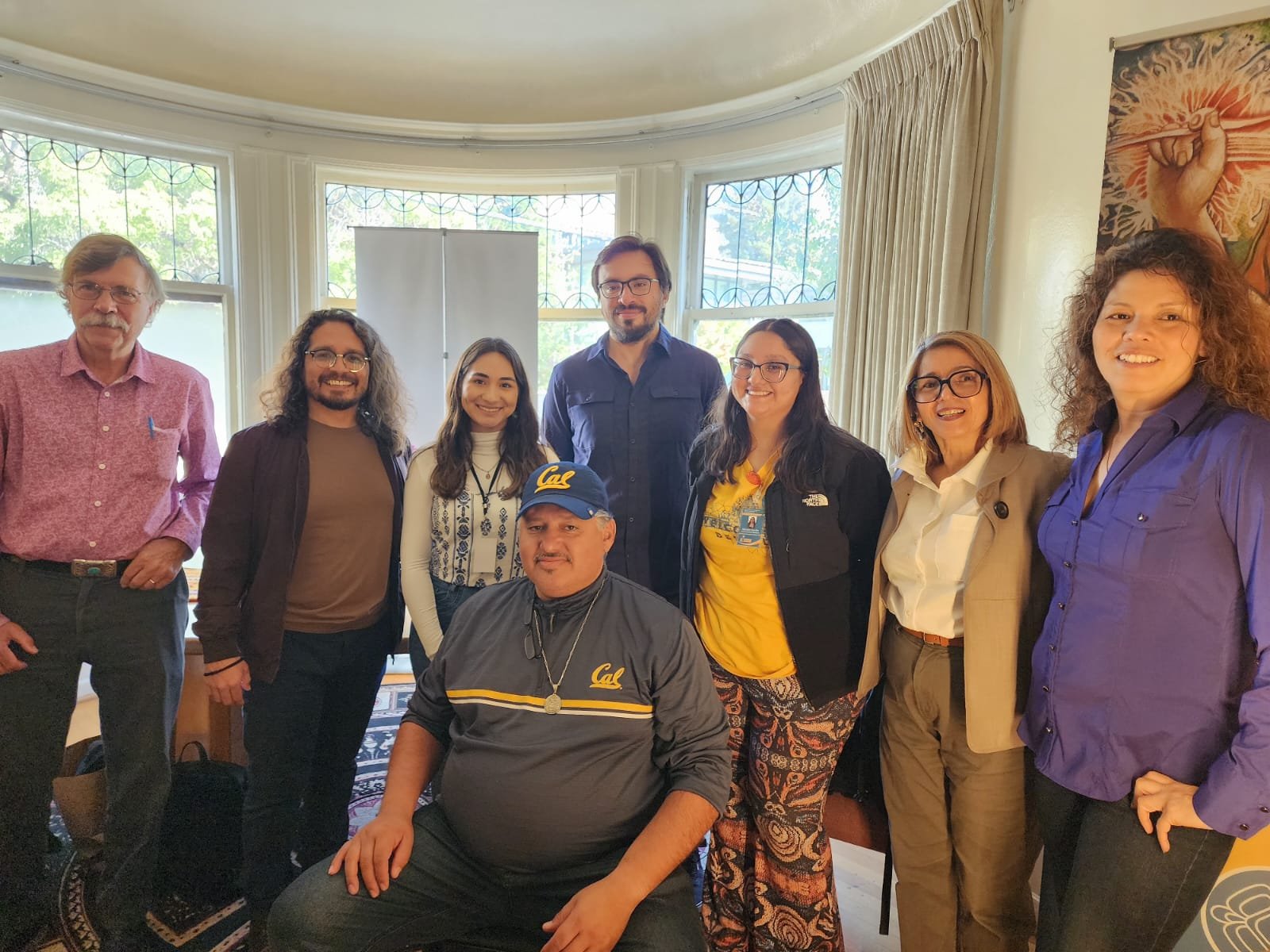
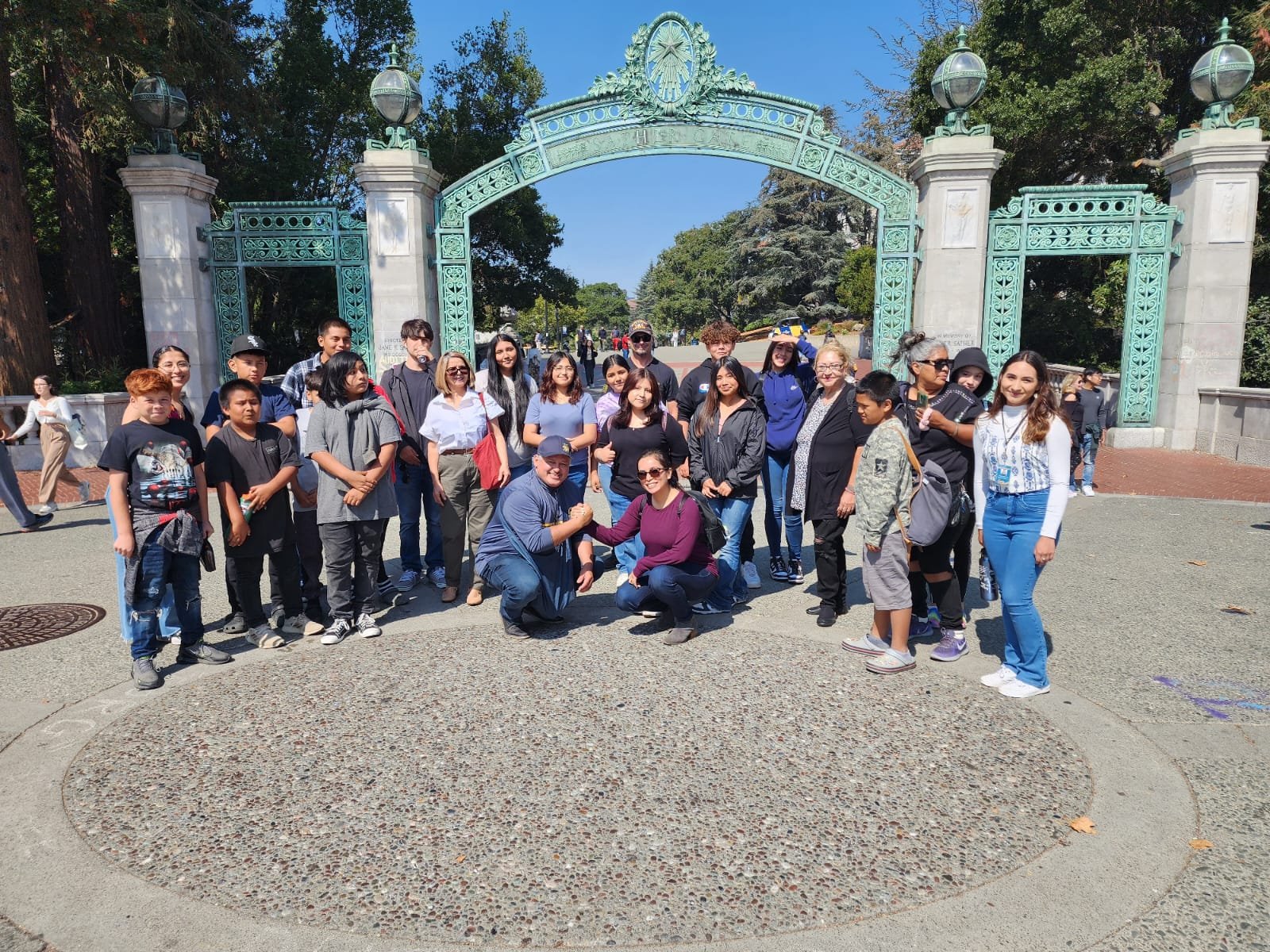
Read more about our work in Huron in our work sites section
Credits:
Written by undergraduate research assistant: Cynthia Solorio Gaitan
Web page designed by: Dr. Carolina Talavera





